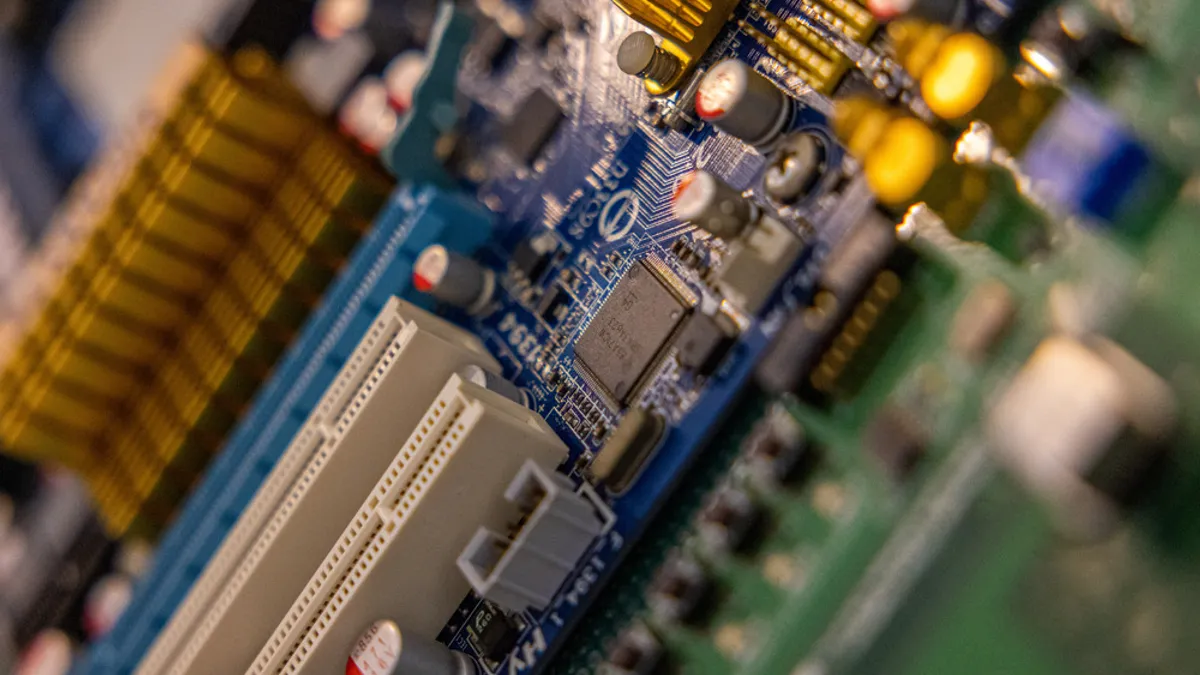Peter Austin is the CEO of AdvancedPCB, a leading North American printed circuit board design and manufacturing company. Opinions are the author’s own.
From medical devices to fighter jets to the smartphones that have become another appendage for most, there is virtually no person who has been untouched by the need for microelectronics.
Given this reality, a broad spectrum of industries rely heavily on the availability of them in order to operate. Thanks to the COVID-19 pandemic, a majority of American citizens experienced firsthand the breakdown that occurs as a result of a supply chain disruption. And that’s the least of our domestic worries.
After its initial passing in 2022, the CHIPS and Science Act continues to gain strength as recently as earlier this month, with an additional $450 million grant delivered to SK Hynix, to further drive domestic chip production. Originally, the CHIPS Act was passed to support investments in factories, equipment, workforce training and research and development. And while its passing was necessary, it still falls short of this country’s technological needs.
A robust domestic electronics manufacturing industry is vital to U.S. national defense and heavily impacts the ecosystem across industries including automobile, defense, aerospace and more. It is critical to our national security to invest in a reliable supply chain, and as the U.S. works to maintain a technological advantage, that means investing not just in chips, but also in the tangential and necessary industries, such as printed circuit boards.

Generally speaking, the industry as a whole embraces the CHIPS Act, but with an asterisk, and one that needs the eyes and ears of all policymakers. Just as the government is beginning to invest in the domestic semiconductor industry through this legislation, we must not forget that these chips require printed circuit boards. PCBs are crucial to closing the technology loop in the United States, and yet there is nowhere near enough focus on ensuring their domestic production.
Building onto the CHIPS Act, the introduction of the Supporting American Printed Circuit Boards Act in 2022 was a promising development, proposing $3 billion to support PCB production, in addition to the initial $52 billion provided by the CHIPS Act for semiconductor manufacturing incentives and research investments. Such moves could help rebuild America’s electronics manufacturing industry. Two years after its first attempt, the industry continues to flounder as funding for chips continues, ignoring the fact that the two must go hand-in-hand.
Now that funding is actively flowing, we must flag that the CHIPS Act only begins to address a fragile domestic industry. As a starting point, the legislation is encouraging, but it falls short of addressing the needs of the domestic ecosystem as a whole. With a decades-long history of offshore business, this country is facing a massive dilemma — while it possesses the talent to design cutting-edge technology, it lacks the means to manufacture it.
Our reliance on offshore manufacturing touches the entire electronics industry. As such, we remain reliant on offshore production, which as we’ve seen, leads to supply chain instability. Investment towards chip manufacturing will certainly support the industry, but does not necessarily guarantee these resources will be allocated to onshore jobs and manufacturing, which spans far beyond the chip itself.
The Defense Production Act and the SAPCB Act are commonsense extensions to the progress already made and will further strengthen U.S. printed circuit board fabrication, revitalizing the greater defense electronics-industrial base at an important time of geopolitical activity.
It’s of bipartisan importance that the U.S. remain a global leader in this space – in other words – independently able to produce the entire microelectronics stack in order to remain technologically innovative, resilient and secure. It goes without saying that an increased reliance on other nations for these components puts our national capabilities and security at risk.
We must continue amplifying this message to lawmakers, as the urgency will only build. A recent National Defense Industrial Strategy highlighted microelectronics as an essential technology to continue strengthening and maintaining our defenses against international threats, naming a domestic integrated supply chain as a key factor in this effort.
The SAPCB Act was designed to ensure the future onshoring of critical PCB production, and yet we have seen no movement in the past year. Nor does an election year allow for it, despite the countless red flags warning of supply chain disruption and national security threats. It would be catastrophic for this to fall even further out-of-sight, out-of-mind, inevitably increasing our reliance on other countries to maintain our technological momentum.
The imperative for robust domestic electronics manufacturing, particularly in microelectronics and printed circuit boards, has never been more urgent. The time is now to sustain momentum in advocating for comprehensive measures that secure our technological independence and safeguard our national security interests. As the world becomes increasingly interconnected, the ability to independently produce and provide these vital components ensures our strategic national competitiveness and security on the global stage.




















